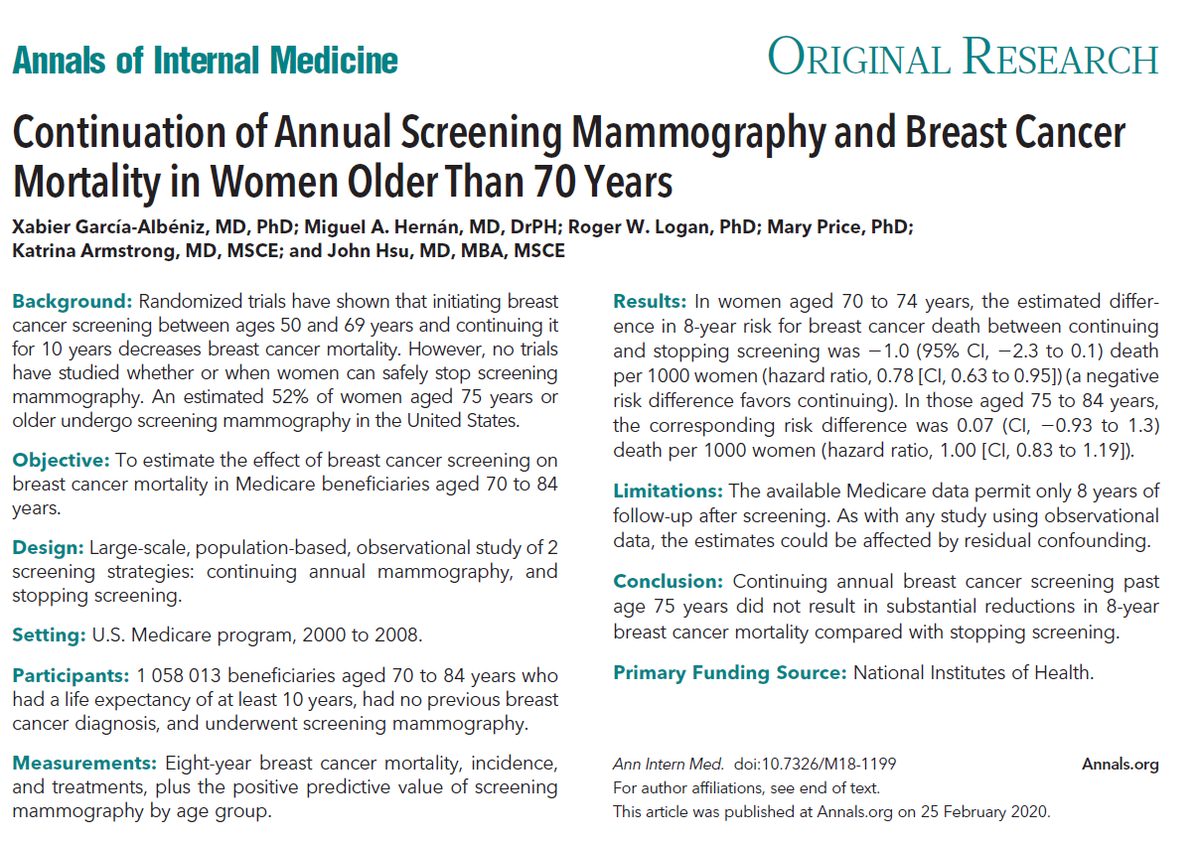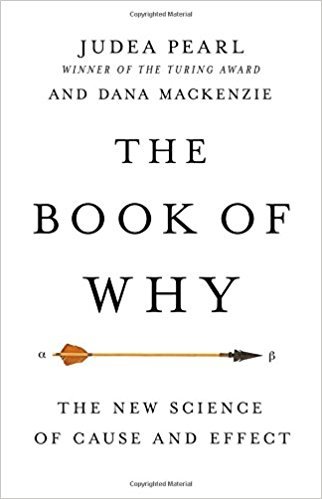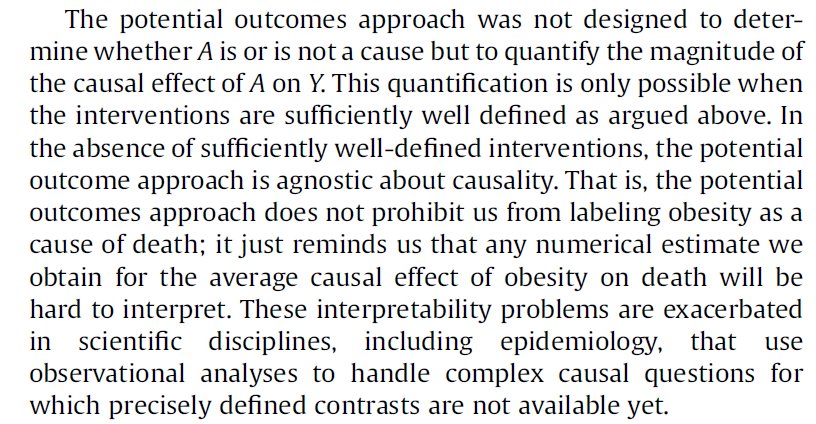Discover and read the best of Twitter Threads about #TargetTrial
Most recents (9)
1/
One day everyone will recognize #selectionbias due to a #collider and the world will be a better place.
This time observational studies found a higher risk of omicron reinfection after a 3rd dose of #COVID19 vaccine. As usual, alarms went off.
Can you see the obvious bias?
One day everyone will recognize #selectionbias due to a #collider and the world will be a better place.
This time observational studies found a higher risk of omicron reinfection after a 3rd dose of #COVID19 vaccine. As usual, alarms went off.
Can you see the obvious bias?

2/
Those who receive a booster and get infected are, on average, more susceptible to infection than those who don't receive a booster and get infected.
So no surprise than those who receive a booster and get infected are more likely to get reinfected.
Led by @susanamcorella...
Those who receive a booster and get infected are, on average, more susceptible to infection than those who don't receive a booster and get infected.
So no surprise than those who receive a booster and get infected are more likely to get reinfected.
Led by @susanamcorella...
3/
... we described the bias @bmj_latest with simulations + real data.
We show that a vaccine booster will be associated with higher reinfection risk even if the booster has no harmful effect.
Now the good news: Preventing this #selectionbias is easy...
bmj.com/content/381/bm…
... we described the bias @bmj_latest with simulations + real data.
We show that a vaccine booster will be associated with higher reinfection risk even if the booster has no harmful effect.
Now the good news: Preventing this #selectionbias is easy...
bmj.com/content/381/bm…
1/
Our findings on a fourth dose (2nd booster) of the Pfizer-BioNTech #COVID19 vaccine are now published.
Compared with 3 doses only, a fourth dose had 68% effectiveness against COVID-19 hospitalization during the Omicron era in persons over 60 years of age.
Interestingly...
Our findings on a fourth dose (2nd booster) of the Pfizer-BioNTech #COVID19 vaccine are now published.
Compared with 3 doses only, a fourth dose had 68% effectiveness against COVID-19 hospitalization during the Omicron era in persons over 60 years of age.
Interestingly...
2/
... this is yet another example of the need for good #observational studies that emulate a #TargetTrial.
Would it be better to have a real randomized trial? Yes
Do we have a randomized trial? No
Will we have a randomized trial? Perhaps, but too late for a timely decision.
... this is yet another example of the need for good #observational studies that emulate a #TargetTrial.
Would it be better to have a real randomized trial? Yes
Do we have a randomized trial? No
Will we have a randomized trial? Perhaps, but too late for a timely decision.
3/
Last year, observational evidence was also used to recommend a first vaccine booster.
Our and others' studies provided evidence on the booster's protection against hospitalization after infection with Delta:
Policy makers listened. Lives were saved...
Last year, observational evidence was also used to recommend a first vaccine booster.
Our and others' studies provided evidence on the booster's protection against hospitalization after infection with Delta:
Policy makers listened. Lives were saved...
I am pleased & proud to see the #PLUStrial published in @NEJM today. It is my 10th @NEJM paper! Here’s my list of @NEJM papers and what I think they mean for clinical practice
#1: The #HEATtrial (Dec 2015) showed that using paracetamol to treat fever in ICU patients with suspected infections did not affect the number of ICU-free days. Mortality rates were similar in paracetamol & placebo-treated patients:
nejm.org/doi/full/10.10…
nejm.org/doi/full/10.10…
These data provide reassurance that if paracetamol is administered to treat fever in the setting of an infection or given for another reason to a patient who happens to have fever & infection, such as for analgesia, harm is unlikely to result.
@ProfMattFox 1/
The odds ratio from a case-control study is an unbiased estimator of the
a. odds ratio in the underlying cohort when we sample controls among non-cases
b. rate ratio in the underlying cohort when we use with incidence density sampling
No rare outcome assumption required.
The odds ratio from a case-control study is an unbiased estimator of the
a. odds ratio in the underlying cohort when we sample controls among non-cases
b. rate ratio in the underlying cohort when we use with incidence density sampling
No rare outcome assumption required.
@ProfMattFox 2/
Because the odds ratio is approximately equal to the risk ratio when the outcome is rare, the odds ratio from a case-control study approximates the risk ratio in the underlying cohort when we sample controls among non-cases and the outcome is rare.
But...
Because the odds ratio is approximately equal to the risk ratio when the outcome is rare, the odds ratio from a case-control study approximates the risk ratio in the underlying cohort when we sample controls among non-cases and the outcome is rare.
But...
@ProfMattFox 3/
... for an unbiased estimator of the risk ratio (regardless of the outcome being rare), we need a case-base design, not a classical case-control design.
Of course, all of the above only applies to time-fixed treatments or exposures.
As for the causal interpretation...
... for an unbiased estimator of the risk ratio (regardless of the outcome being rare), we need a case-base design, not a classical case-control design.
Of course, all of the above only applies to time-fixed treatments or exposures.
As for the causal interpretation...
1/
We've just confirmed the effectiveness of the Pfizer-BioNTech vaccine outside of randomized trials.
Details @NEJM: nejm.org/doi/full/10.10…
Yes, great news, but let's talk about methodological issues that arise when using #observational data to estimate vaccine effectiveness.
We've just confirmed the effectiveness of the Pfizer-BioNTech vaccine outside of randomized trials.
Details @NEJM: nejm.org/doi/full/10.10…
Yes, great news, but let's talk about methodological issues that arise when using #observational data to estimate vaccine effectiveness.
2/
A critical concern in observational studies of vaccine effectiveness is #confounding:
Suppose that people who get vaccinated have, on average, a lower risk of infection/disease than those who don't get vaccinated.
Then, even if the vaccine were useless, it'd look beneficial.
A critical concern in observational studies of vaccine effectiveness is #confounding:
Suppose that people who get vaccinated have, on average, a lower risk of infection/disease than those who don't get vaccinated.
Then, even if the vaccine were useless, it'd look beneficial.
3/
To adjust for confounding:
We start by identifying potential confounders.
For example: Age
(vaccination campaigns prioritize older people and older people are more likely to develop severe disease)
Then we choose a valid adjustment method. In our paper, we matched on age.
To adjust for confounding:
We start by identifying potential confounders.
For example: Age
(vaccination campaigns prioritize older people and older people are more likely to develop severe disease)
Then we choose a valid adjustment method. In our paper, we matched on age.
#Causalinference that talks the talk and walks the walk.
Claim: "Continuing #breastcancer screening past age 75 doesn't reduce 8-year breast cancer mortality."
Emulation of a #TargetTrial led by @xabieradrian with Medicare data
doi.org/10.7326/M18-11…
Let the discussion start.
Claim: "Continuing #breastcancer screening past age 75 doesn't reduce 8-year breast cancer mortality."
Emulation of a #TargetTrial led by @xabieradrian with Medicare data
doi.org/10.7326/M18-11…
Let the discussion start.

@xabieradrian @AnnalsofIM @HarvardEpi @harvard_data @HarvardBiostats @HarvardChanSPH @CMSGov @CMSgovPress @MonganInstitute @MassGeneralNews 2)
Because there's so much talk about #causalinference around here.
Computer scientists, economists, statisticians... talk a lot about the merits of #DeepLearning, instrumental variables, or whatever their preferred methodology is.
Everybody: This is your chance to shine.
Because there's so much talk about #causalinference around here.
Computer scientists, economists, statisticians... talk a lot about the merits of #DeepLearning, instrumental variables, or whatever their preferred methodology is.
Everybody: This is your chance to shine.

3)
No more toy examples. A real world question:
"At what age should #breastcancer screening stop?"
Need to compare the mortality of women under two dynamic screening strategies using a database of insurance claims with time-varying treatments and confounders.
How'd you do it?
No more toy examples. A real world question:
"At what age should #breastcancer screening stop?"
Need to compare the mortality of women under two dynamic screening strategies using a database of insurance claims with time-varying treatments and confounders.
How'd you do it?

Hello #epitwitter! Time for an @epiellie @AmJEpi tweetorial.
Today’s topic is the Target Trial Framework for #causalinference and how to apply it to improving observational studies.
#epiellie
Today’s topic is the Target Trial Framework for #causalinference and how to apply it to improving observational studies.
#epiellie

So, what is the #targettrial framework?
Well it’s not a new method! Instead think of it as pedagogical device that provides a structured way to build your research question and study design for observational studies and minimizes the potential for bias.
Well it’s not a new method! Instead think of it as pedagogical device that provides a structured way to build your research question and study design for observational studies and minimizes the potential for bias.
Results of the #TARGETtrial, the largest critical care nutrition trial ever undertaken, are now online @NEJM
nejm.org/doi/full/10.10…
What we did, what we found, and what it means follows…
Please RT to help translate this new knowledge.
nejm.org/doi/full/10.10…
What we did, what we found, and what it means follows…
Please RT to help translate this new knowledge.
Thanks to funding from @HRCNewZealand & @NHMRC we randomised 4000 participants from 46 Australian and New Zealand ICUs in less than a year and a half!
Adults mechanically ventilated & expected to require enteral nutrition in ICU beyond the calendar day after randomisation were assigned to energy dense enteral nutrition (1.5kcal/mL) or standard care enteral nutrition (1.0kcal/mL) at a dose of 1mL/kg/hr based on ideal body weight
Judea Pearl has a new book (with Dana Mackenzie).
amazon.com/Book-Why-Scien…
To me, Judea is an intellectual hero. My life changed after hearing him at Harvard over 20 years ago. Like many of us in #causalinference, I owe so much to him.
And yet I disagree with him on a key issue.
amazon.com/Book-Why-Scien…
To me, Judea is an intellectual hero. My life changed after hearing him at Harvard over 20 years ago. Like many of us in #causalinference, I owe so much to him.
And yet I disagree with him on a key issue.

Pearl believes that any causal effect we can name must also exist.
To him, the meaning of “the causal effect of A on death” is self-evident. He says we can quantify, say, the causal effect of race or the causal effect of obesity.
I don't think we can.
To him, the meaning of “the causal effect of A on death” is self-evident. He says we can quantify, say, the causal effect of race or the causal effect of obesity.
I don't think we can.
We cannot estimate "the causal effect of obesity" because we don't know what that means.
For the causal effect of A to be well defined, we need a common understanding of the interventions that we would use to change A. Otherwise, the effect is undefined.
ncbi.nlm.nih.gov/pmc/articles/P…
For the causal effect of A to be well defined, we need a common understanding of the interventions that we would use to change A. Otherwise, the effect is undefined.
ncbi.nlm.nih.gov/pmc/articles/P…


